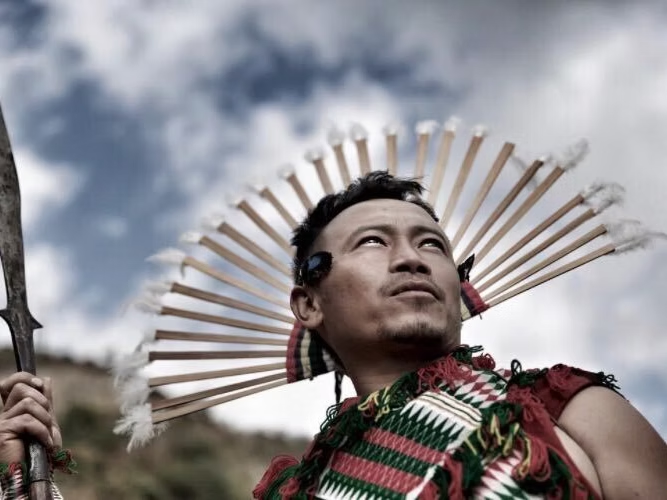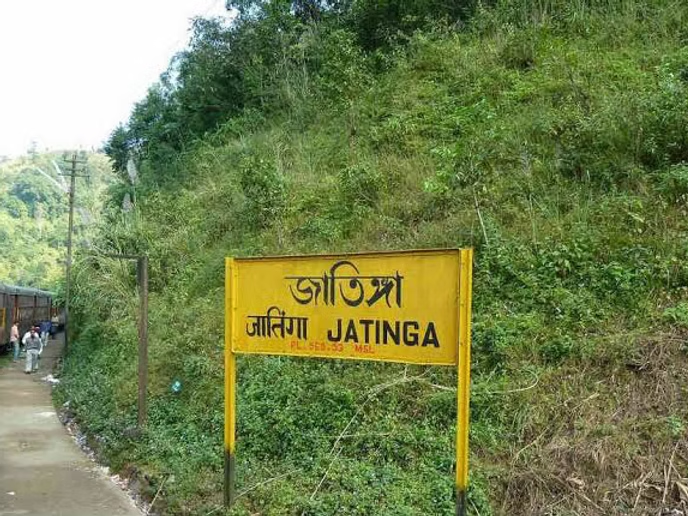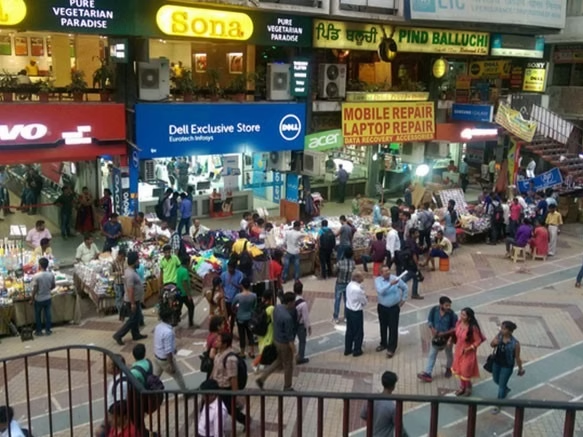The Forgotten Culture of India

Tribes of India Know more about Indian Culture and Indian Culture food and Indian Culture facts and want to know more about the evolution of Indian culture and the Indian culture food and dress – Continue Reading! Now check for few things to know about Indian Culture!! India had always been known as the land that portrayed cultural and traditional vibrancy through its conventional arts and crafts. It is a country that enjoys a unique diaspora. Geographically, we are adorned by the great heights of Himalayas, to sprawling beaches, and dry terrains. But in the midst of all this, we carefully ignore some of the backbenchers of our population, the people who reside away from the comfort of materialism, and who thrive and build their lives amidst nature, the tribals of India. Here’s a list of six unexplored Tribes of India: 1. Konyak Tribes 2. Khasi Tribes 3. Bhotiya Tribes 4. Siddi Tribes 5. Dropka Tribes 6. Kurumba Tribes Tribes of India map 1. Konyak Tribe Konyak, the last tattooed headhunters Residing in the forest interiors of Nagaland, The Konyaks also known as the warrior tribe are an isolated ethnic group defined culturally by their headhunting practice and elaborate facial tattoos. A plethora of color unfolds when you visit the Naga villages; colorful shawls, jewelry, headgear, bags, and jackets with bright colors and tribal motifs are quite a sight to behold. The Konyaks are hospitable, warm-hearted, fond of merry-making and believe that human heads exuded a mystical force that would bring prosperity and benefit local crops and are considered to be the last tattooed headhunters of India. Shubham mansigha tried to best portray the tribal culture of Nagaland in the Hornbill festival 2. Khasi Tribes The colorful Khasi tribes Know more about Khasi tribe dress and Khasi tribe festival: Over the lofty green mountains, and beneath the juniper-colored canopies breathes the high-spirited society of the Khasi Tribe. Residing, among the clouds, on the Jaintia and the eponymous Khasi Hills of Meghalaya they are one of the earliest settlers of the subcontinent. One of “The Seven Huts’ of Khasi they are distinguished by being the only matrilineal society of India. Living a life filled with music, art, and dance the Khasi people are a colorful tribe. With a fashion of long hats, silver jewelry, and prismatic dresses they are kind and warm-hearted people welcoming tourists from all around the world into their homes, giving them a chance to experience their beautiful traditions and holistic culture. Treesisters very well describes the unique culture of Khasi tribes of India 3. Bhotiya Tribes Bhotiya tribes Speaking the fascinating language of Rongba, this tribe of Shepherds is found in the various States of India, primarily Uttarakhand – which we presume has ideal weather to grow pot. Yes, the most interesting characteristic of the Bhotiya Tribal culture is the ritualistic use of marijuana – not for recreational but religious purposes. Hindu mythology and religious traditions have provided Bhotiyas with an interesting set of rituals. Lord Shiva’s association with Bhang, who uses it to keep the world safe from his anger, is a strong Bhotiya belief. Following Shiva’s example, this tribe offers Bhang at celebrations of Holi and Maha Shivaratri. Check out Nomadic shoes blogs to know more about the unique culture of Uttarakhand 4. Siddi Tribes Siddis, the lost gems of Africa found in India Gujarat, known for its scenic beauty of mountain ranges, coastline beaches, and the Great Rann of Kutch is also home to one of the most unusual tribal communities in India, The Siddhis tribe. The Siddis of Gujarat are considered to be the lost gems of ancient Africa, hidden away in India. They don’t retain much of their African heritage, neither language nor history but are guardians of a rich and unique musical tradition that is truly a hidden jewel of Indian indigenous culture. Tanayesh through his Shoestring travel blog intends to portray unique travel stories 5. Dropka Tribe The floral headdressers, Dropkas Legend has it that the Dropka also known as Bropka were the valiant soldiers of Alexander the Great, who got lost from their company. Tucked away in the Paradise of the Earth, Kashmir and the Land of High Passes, Ladakh, these dwellers form a few thousand head community that boasts having a rich culture and a traditional lifestyle. The artistic and evocative attire along with a subtle hint of simplicity brings out a sensational feeling of awe. A distinctive feature of the Bropka tribe is the importance given of flowers in their culture. Signifying purity and love, they can be seen virtually everywhere; around their homes on their motley headgears. Dropka community in Ladakh is a loving community and welcomes tourists and globetrotters with an open arm to witness their unique and eccentric culture. Check out Theiffyexplorer’s blog to know more about the Dropka Tribal culture 6. Kurumba Tribes Kurumba tribes Kurumba Tribe in the Nilgiri Hills is one of the earliest known inhabitants of the Western ghats. Hunting and collecting forest produce being the two main means of living, the tribe lives very much in tune with Nature. While Kurumba men are hunters, cultivators, and gatherers, Kurumba women are traditionally body tattooists. Music, art, religious traditions, and rituals of the Kurumbas are fascinating but the most enthralling thing is their unusual beliefs in sorcery. Their powers are believed to be so effective that other tribes fear and respect them. Illness and death are deemed Kurumba-cast spells. To know more about these unique communities of the Nilgiris, checkout Makeithappen.co.in
The Infamous Haunted Sites of India!

“When I was little, every night when the lights were turned off and I went to sleep, two dark forms would descend from the ceiling near the doorway into my room. They would quietly walk up to my bed and stood on each side of my headboard, staring at me. I would cover my head with the blanket until one day I dared to tell my mother. She put a lamp in my room and told me to pray. I sleep with a lamp on all night to this day.” The most spine-gripping stories are the most intriguing! Isn’t it? They spur your adrenaline levels and brings into action, the mysterious fear of the unknown. You must have been a phasmophobic in your early days, being all ears to the ghastly folklores thrown by your grandma. But were they all factual, or did they never make any sense? India, the land of superstitions, stores some of the most uncanny, and spooky stories from all around the world. Not being verbose, here’s taking you down to some of the most bone curdling places in India: • JATINGA, ASSAM By: www.tourmyindia.com Suicide – A common word for you folks. The word must have reached your cochlea plethora of times. Have you ever heard of bird mass-suicide? It sounds strange, isn’t it? Jatinga, a village in Assam is infamous as the ‘bird suicide spot ‘. This spooky Bermuda Triangle for the birds remains inexplicable to date. In and around September and October, 44 species of birds behave abnormally between 07 P.M to 10 P.M. The birds, in a bizarre manner, strike their heads into torches, lights of the cities. After devoting their much-needed time in research, many ornithologists have claimed their theory. According to their say, during late monsoons, most of the water bodies remain flooded in Assam. As the birds lose their natural habitat, they migrate and Jatinga falls on their way. Most of the birds find it at ease to hover near the lights. They look bewildered and become prone to the villagers. Some of them are hit by a vigorous swing of bamboo poles by the villagers. Though it remains to be confirmed yet; the phenomenon chills out to the spine of the listeners! If you want to read more about this scary place we recommend you to read the Haunted Indian blog, which has the spookiest stories. • DUMAS BEACH, GUJARAT Dumas Beach By: www.livetravelindia.com Beaches relax you out of the hullabaloo of your life. The undulating waves, invigorating atmosphere thrown by a beach takes you to paradise. Here’s how Dumas Beach in Surat, comes into action and turns the tide : Dumas Beach is one of the most sought-after recreational spots in Gujarat. Albeit, the beach has got something to offer out of the box to its visitors. The black sand is enough to give an eerie feel to the beach. The sand’s black shade is because of the amount of ash created by burning the dead which got amalgamated with white sand of the beach and turned dark in shade. They say that the departed souls of the evil spirits saunter at the beach at midnight. Reports depict that several tourists and locals have gone missing from the beach. Locals have even heard weird sounds of someone sobbing out loud, in the presence of no soul on the beach. Many other paranormal activities have also been reported after the sun goes down. Those who dared to visit the beach after the moon showed up; they either never turned up to say or had the most creepy experiences to share. Dogs in the area behave abnormally around the beach after dark, conveying their discomfort with vocally, like howling and barking. Though Dumas might behave just like any other beach during the day, it will have chills go down your spine after the sun bids adieu! Want to give it a try? If you want to read a first-hand travel experience of this scary beach then we suggest you read the blog of Nandini Deka, who visited this beach alone! • BAROG TUNNEL, HIMACHAL PRADESH By: www.amazingworldreality.com Tunnels are usually long passages and offer something interesting on a railway journey. But, have you ever come across a haunted tunnel? Let me take you to one such! Tunnel No 33, Shimla is the longest on Kalka Shimla rail route. Colonel Barog had been shouldered the responsibility of its construction. Barog played a gambit to speed up the process and asked the workers to dig the tunnel from opposite ends so that they meet at its midway. Barog’s calculations went in vain and upon reaching the midway, it came to their attention that the tunnel was not aligned and the workers were just boring two different tunnels in different directions. The hapless fellow was on the receiving end and was fired from the contract, after paying a fine. Barog, unable to cope with embarrassment, just walked into the tunnel and shot himself dead. He was buried near the tunnel and the village was named after him. It’s said that he has not left the tunnel since then. The locals and many travelers spoke of sighting his ghost in the new tunnel. The atmosphere in the tunnel is damn eerie. Is it yet another concocted story or a thing to believe? I leave it for you to decide! We also suggest you read the BikingMystery adventure, who wrote a detailed experiential blog about this scary place. You will get to know about the history and the present situation of this spooky tunnel. • DOW HILL, DARJEELING Dow Hill By: www.laughalaughi.com Dow Hill of Kurseong is known for its divine beauty, forested hills, and orchid gardens. Wait! let me add something interesting to this list; a headless ghost, a haunted school, and a pinch of paranormal happenings. Does that sound spooky? Exactly! You have to digest this in one go. Here’s us taking you to
The Whoopee Art of Haggling

A Marketplace By: businessworld.in Living in the 21st century with mankind’s most advanced technologies, where we can pretty much get anything right at our doorsteps, at just a click on our smartphones surely makes our lives easier and comfortable. However, even with this amount of facilities at our disposal, are we bored of markets, especially Indian markets? An absolute “No” would be the answer! We can never get enough of the bustling nature of an Indian Market. Local markets of a city are its lifelines and is a center of attraction for both buyers, sellers and provide an enthralling and overwhelming experience to the travelers that visit India from all around the world. The markets of India are called ‘Bazaars’ in the Hindi language aren’t any new concept, their chronology can be dated back to the Pre-Mauryan period, followed by, the Chola period, and then the Mughal. The change in time and technology over this period has surely altered the traditional market settings, but still, the ideology remains the same. The colorful chaos; the hustle-bustle; the vibrant and enormous range of choices present reflect upon the diversity of our great nation and impels us to shop at least once in our lifetime. Perfectly termed as ‘Organized Chaos’, Indian Bazaars, apart from their noisy enchanting nature, are most famous for their friendly haggle between customers and sellers. Picking out unbelievable bargains from shops using those extraordinary haggling skills is a must-have for everyone visiting the markets. Markets are flooded with tons of kinds of shopkeepers, ranging from those who offer their products at genuine prices to those who quote their market price at twice the price. However, this hardly matters in a place like India, where regardless of the sellers’ instincts, every customer tries his level best to obtain an item at a significant bargain. The beauty of this interaction is that even after lots of haggling, the two parties remain equally happy, with the seller making his required profit margin and the customer getting equal satisfaction from the purchase. Negotiating before purchase from an old bazaar is an art and a life skill as well. With the trend of negotiating being so popular for many years, sellers often tend to inflate the price more than usual expecting the customer to deflate it while purchasing. Shopper Haggling By: vacationindia.com Bargaining is a social activity, which takes a lot of time and demands experience, artistry, and efficiency for both the parties involved. A convincing negotiation requires competency and readiness, providing only a little chance for the other party to oppose him. The salesmen, being professional in their fields, hardly fail to make a tourist pay for an item more than necessary. They put forward cogent arguments for the purchase made by the buyer, which the customer believes it to be a sensible deal. So it is always advisable to do a little research on the product you’re looking for (just to be sure that the price you pay matches your expectations). Online research might be of a little help in the case when shopping in a bazaar, the best being consulting two or more sellers selling a similar product before concluding upon a decision. A precious life hack would be to let the seller tell you the price first. After hearing the price, set your price limit not above half the price he quoted. Stay firm on your decision and let him come down further. A contradictory response from the seller is bound to come at this point complaining about the price being too low. This is where the real haggle starts when the customer raises his price a bit and the seller lowers his price a bit. Eventually, both parties reach a mutual agreement with both being satisfied with the deal made. The process involves a lot of excitement, convincing, annoyance, praising to some extent. The shops in which bargaining is most common are the clothing stores, which have no clear mention of the marked price on their labels, followed by footwear stores, bangles and ornaments shops, etc. These shops provide the largest profit margin for sellers and have considerable scope for negotiation. Most often, the customers coming to these shops are aware of the fact that sellers try to keep no stones unturned to persuade a buyer to pay more for an item. They are determined to make a sale and have excellent convincing skills as well. They are all set and prepared for witty customers who use haggling as their primary technique to buy something. The extent of a bargain also depends upon the nature of competition in the bazaar. Areas with numerous vendors and a lot of competition among sellers automatically bring the prices down and a greater scope for haggling as well. It is these minute observations which visitors must pay attention to, to grab the best of the deals. More number of sellers of an item allows the customer to move to the next seller if he is unable to get a fair deal on one shop. If one is completely ignorant of the prevailing prices in the market, one good advice would be to ask a trusted local in the market area and ask about the appropriate price range of a product. When trying to bargain for an item, try not to look flamboyant. This will make the impression that the customer has an affluent lifestyle, and the deal would be challenging to make. Even if a seller asks for ridiculously high prices, or is not willing to lower the prices, one should always be courteous and polite and not be led to violent arguments. Shopping serves an entertainment purpose with haggling being just an add-on to the fun part. It shouldn’t be taken seriously. A well-known tactic is to simply walk away to another vendor if the former one is being rude or unjust. Sometimes, even if the seller isn’t lowering his limit,
Dhanushkodi: The Ghost Town

“Everything has come to an end, marking its way for new beginnings.” Outlined by the Bay of Bengal on one side and the Indian Ocean on the other, this place should be your next destination if you are fond of spotless white sand, #the ruins of an old town, and the spooky experiences of #ghostly existence. #Dhanushkodi, declared as the #GhostTown is one of the less travelled places of South India. Blemished with the havoc of #1964Tsunami, this town is the most fascinating of all. On one side, we found a structure in ruins which looked a lot like an old church. The other side was a sight of ruins of an old railway station , where you can literally see the railway lines disappearing in sand! #Haunted yet divine, this place plays a role in Hindu mythology too. Can you recall the Ram-Setu bridge built by Lord Ram’s Army? Yes, this is the place where it all began ! In a layman’s language, Dhanushkodi is the stretch of land that you see running from #India to #SriLanka, which gradually disappears in water. The deserted place is inhabited with a few people who do not understand English or Hindi. But who won’t take an interest in the hand-made sea jewellery they sell? You will find hardly any shops here except for a few jewellery shops that are run by the inhabitants at reasonable prices! Enjoy the sea, the warmth of the sun, the cool breeze, the pristine white sand and capture the ruins of the entire town! To all the #writers, #photographers and #filmmakers, this place can be your new inspiration ! Where damages and liveliness co-exist. Where breathtaking stillness is a price. Where spectacular stretches of sand have unsaid stories. Dhanushkodi. Ghost Town, since 1964. #Explore Read more about the travel experience from Dhanushkodi in the blog written by Murali!!

